This vegan lemon meringue pie with aquafaba will change the way you think about vegan baking forever. The flaky vegan crust is topped with tangy lemon curd and mounds of fluffy vegan meringue. If you’ve ever wondered whether it’s possible to make a classic lemon meringue pie with 100% plant-based ingredients, this recipe holds the answer.
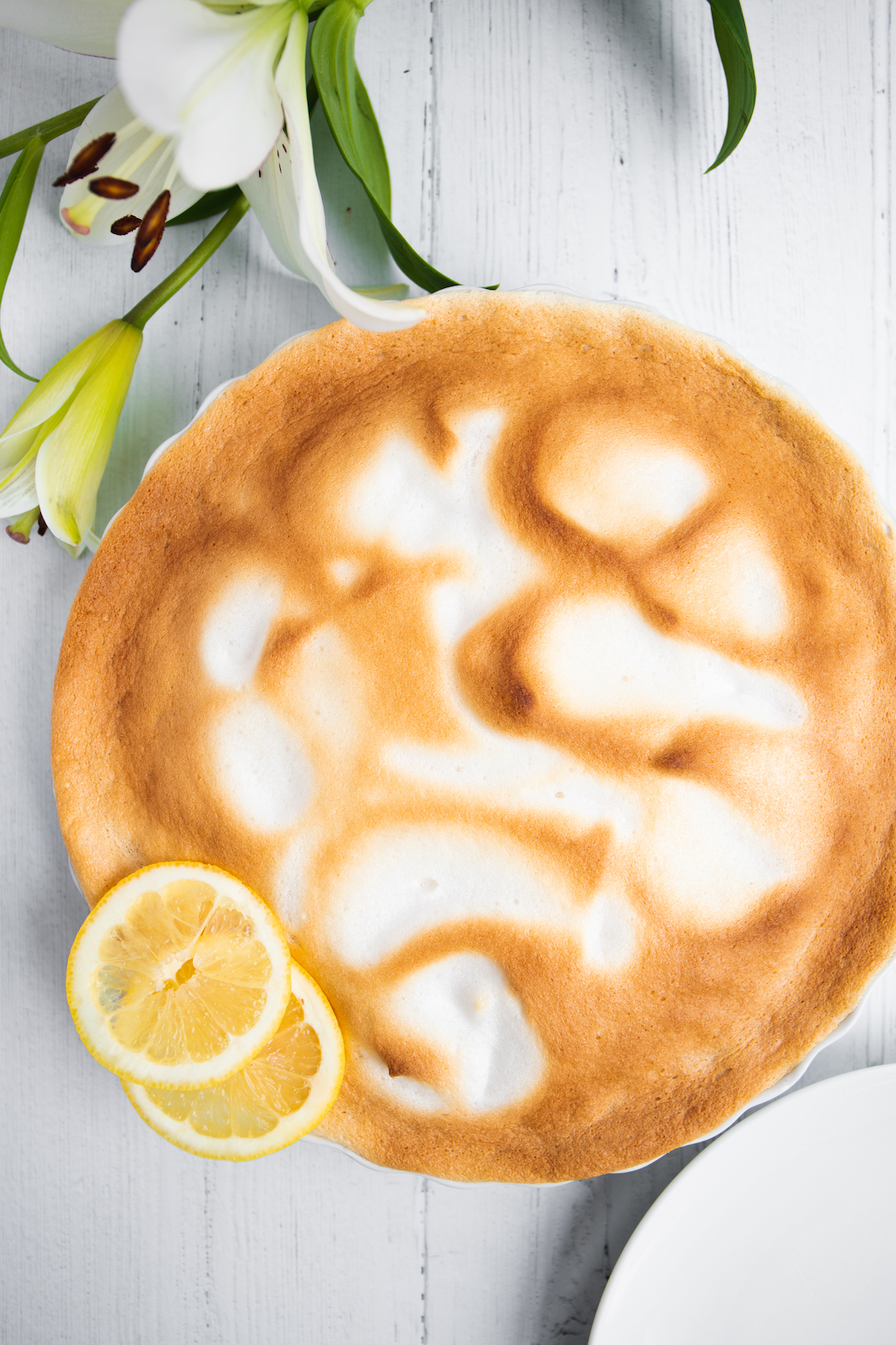
Who would have thought you can make lemon meringue pie without any eggs? Typically, there’s eggs in the filling and even more eggs in the meringue topping. This easy recipe for vegan meringue pie offers the perfect solution.
What Is Vegan Meringue?
Vegan meringue is made from aquafaba, which is essentially bean water that, when beaten, fluffs up just like egg whites and makes the perfect plant-based substitute for meringue. If you want to learn more about this virtually magic vegan egg replacer, here’s my article on what aquafaba is and how it can be used in baking.
Can I Use Regular Egg White Meringue?
Absolutely. If you’re looking for a dairy-free lemon meringue pie only, you can simply substitute vegan meringue (made from chickpea brine) with real egg white meringue. To do this, you will need to beat:
- 4 free-range egg whites
- 1 cup caster sugar
- 2 teaspoons cornflour
Put the egg whites into a large bowl and beat until soft peaks form. Then add half of the caster sugar one tablespoon at a time, whisking between each addition without overbeating. Whisk in the cornflour, then add the remaining half of the caster sugar as before, and beat until stiff peaks form.
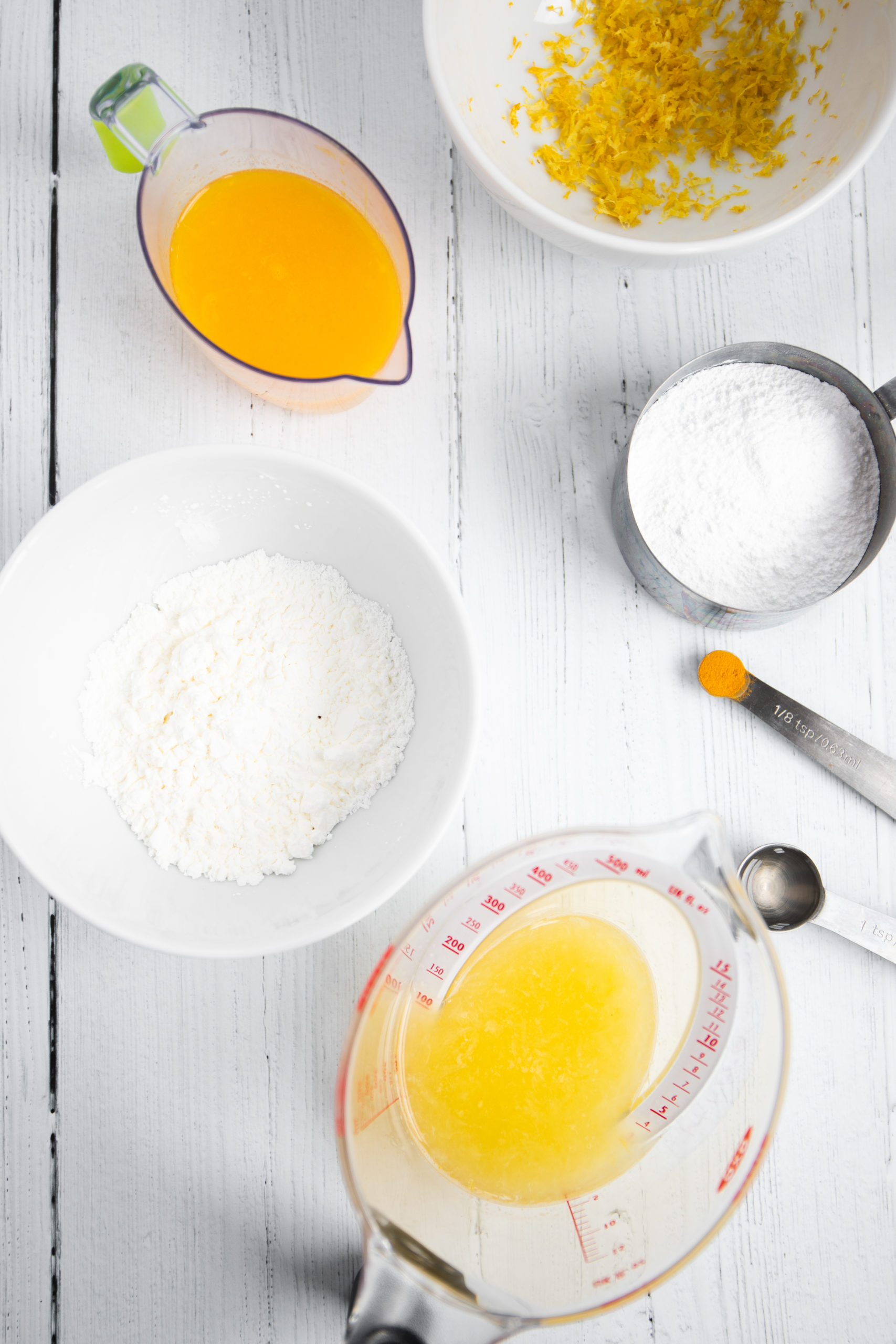
How to Make Vegan Lemon Meringue Pie
There are three components to lemon meringue pie, and though the long list of ingredients and instructions may seem a bit daunting, the process is actually very straightforward.
How to Make Vegan Pie Crust
You can use your favourite vegan pie crust recipe for this pie if you have one, but I strongly recommend trying this one inspired by Lazy Cat Kitchen, which I’ve adapted specially for this lemon meringue pie. It is hands down the flakiest pie crust I’ve ever tried, and only calls for three ingredients! Here’s how you do it:
- Combine sifted flour and powdered sugar in a large bowl. Add coconut oil and rub it into the dry ingredients with your hands. Slowly start adding the water, one tablespoon at a time. How much water you’ll need depends on how absorbent your flour is.
- Combine all the ingredients into a dough gently, but do not knead. Wrap it in a piece of cling film and chill in the fridge for 30 minutes.
- Grease a standard 9-inch pie pan with coconut oil. Take the pastry out of the fridge and roll it into a circle, about ½ inch thick.
- Place the rolled-out pastry over the pan and gently line the inside of the pan with it. Trim the excess pastry with a sharp knife. Pierce the pastry with a fork a few times and place the pan back in the fridge.
- Chill the pastry-lined pan in the fridge for about 60 mins. 45 min into pastry chilling time, preheat the oven to 350°F (175°C). Line the pastry with pieces of baking paper and fill with baking beads or rice.
- Blind bake the pastry for 20 minutes, then remove the beads and bake for another 15 minutes.
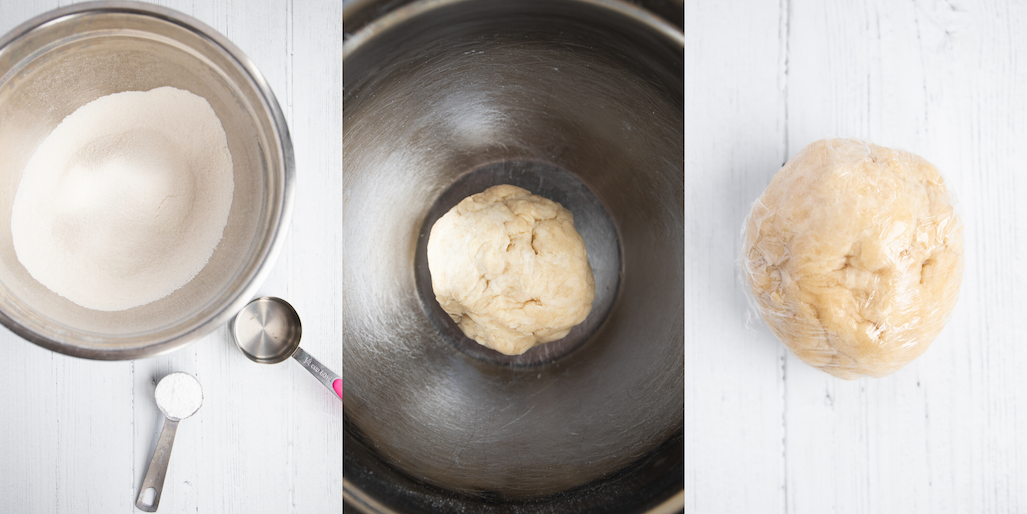
Tips for Making the Best Vegan Crust
- The pastry needs quite a bit of chilling in the fridge. It’s important not to skip this step, even if you’re in a hurry. If you know you’ll be busy on the day of baking the pie, you can easily prepare the crust a few days ahead and chill it in the fridge.
- You need to blind bake the crust. This is important to make sure the crust is not soggy when baked with the pie.
How to Make Vegan Lemon Curd
This recipe for lemon curd requires no eggs and no dairy, but still tastes amazing. Here’s what you need to do:
- In a saucepan, combine the lemon juice and zest and sugar, and bring to a simmer. In the meantime, in a separate bowl mix orange juice with cornstarch. Make sure no lumps remain.
- Once the lemon juice begins to simmer, slowly pour in the cornstarch mixture, stirring constantly. Cook for 2 to 3 minutes, stirring constantly until the mixture thickens.
- Remove from heat and stir in coconut oil and ground turmeric.
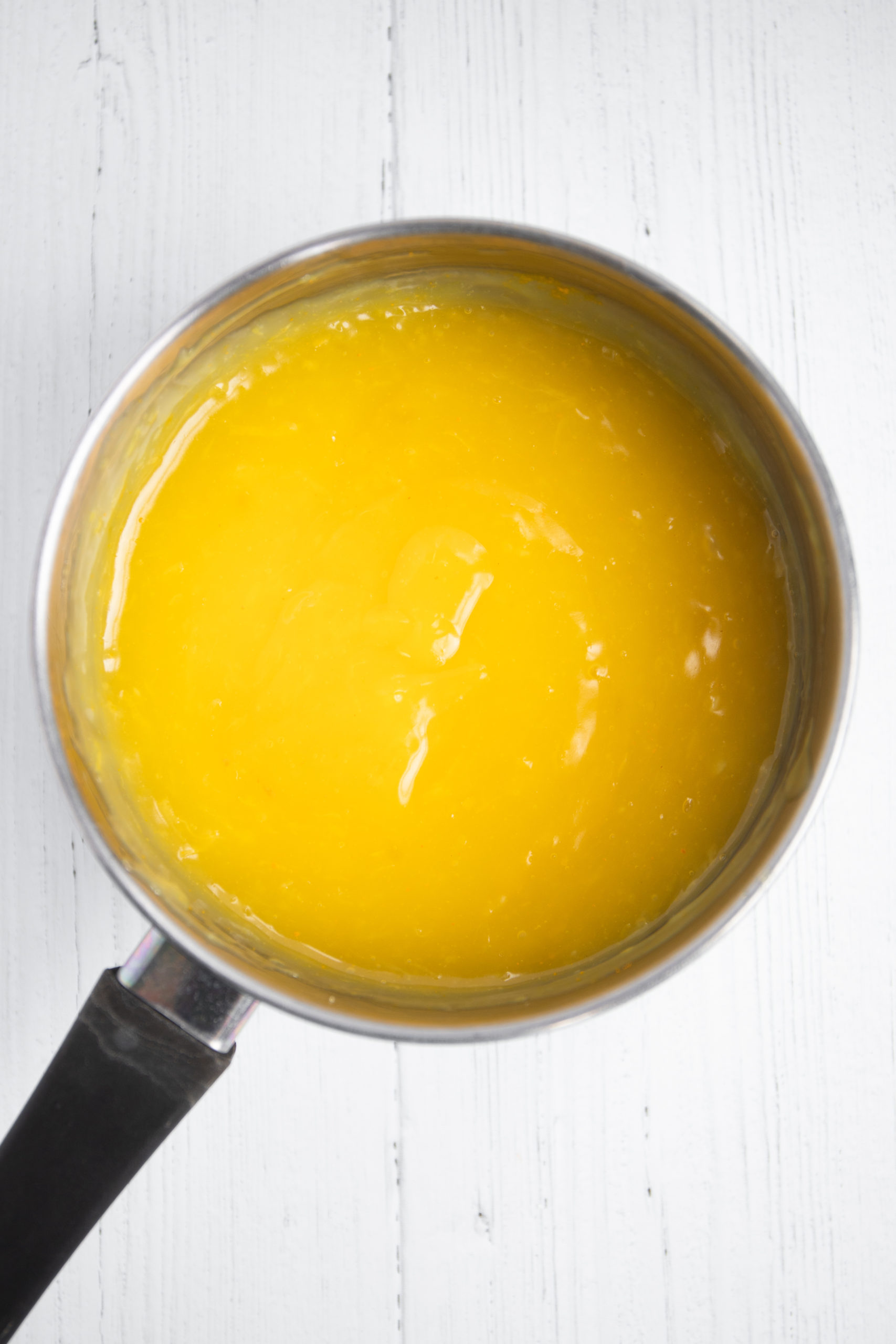
How to Make Vegan Meringue
Making vegan meringue is really no different to making regular egg white meringue. You might need to beat it for a few minutes longer, but the steps to those perfect stiff peaks are quite simple:
- Shake an unopened can of chickpeas vigorously for a few seconds. Then strain the liquid from one can of chickpeas in a mixing bowl, along with the cream of tartar.
- Using a handheld or stand mixer, mix for 1 to 2 minutes on medium speed until it becomes frothy.
- While continuing to mix, add one tablespoon of caster sugar at a time. Once all the sugar is added, continue to mix on medium to medium-high speed until soft peaks form, about 4 to 5 minutes. Add the vanilla and mix for another minute until stiff peaks form.

Tips for Making the Best Vegan Meringue
- When beating vegan meringue, make sure to beat it for at least 8 minutes, until stiff peaks form.
- Use cream of tartar. It’s a stabiliser and it helps the aquafaba to become thick and stiff like egg meringue.
- Once the meringue is ready, you need to work quickly to transfer in onto the pie and have it baking in the oven as soon as possible. This ensures the meringue doesn’t deflate before it’s baked.

Different Types of Sugar
This recipe calls for three types of sugar: POWDERED sugar (used in the crust), GRANULATED sugar (used in the curd) and CASTER sugar (used in the meringue). Here’s a quick breakdown of what these terms mean:
- Granulated sugar, sometimes also known as white sugar, or “regular” sugar. It’s the sugar that has had all of the naturally present molasses refined out of it.
- Caster sugar has the smallest crystal size of white granulated sugar. If you don’t have any at hand, you can make it by placing granulated sugar in a food processor, and pulsing for up to a minute to create a finer sugar.
- Powdered sugar, icing sugar and confectioners sugar are all the same thing. It’s granulated sugar that has been finely ground and mixed with a small amount of cornstarch to prevent caking.

Vegan Lemon Meringue Pie FAQs
How long does lemon meringue pie keep?
Freshly baked lemon meringue pie will keep for about two to three days in the fridge. Refrigerate it covered loosely with aluminium foil or plastic wrap.
Does lemon meringue pie need to be refrigerated?
Yes. Bacteria grow rapidly at temperatures between 40°F and 140°F. Lemon meringue pie should be discarded if left out for more than two hours at room temperature.
Can you freeze lemon meringue pie?
Lemon meringue pie does not freeze well and is not recommended for quality purposes.
How many calories are in a slice of vegan lemon meringue pie?
A slice of this lemon meringue pie has 278 calories.

More Vegan Pie Recipes
Click here for a complete listing of vegan pie recipes.

Vegan Lemon Meringue Pie
Ingredients
- 1 cup (185g) all-purpose flour, sifted
- 1 tablespoon powdered sugar
- ¼ cup (55g) coconut oil, melted
- 3-5 tablespoons (5 tablespoons) ice water
- Finely grated zest from 2 lemons
- ½ cup (120g) lemon juice (from ~2 lemons)
- ¾ cup (150g) granulated sugar
- Juice from 1 small orange
- 5 tablespoons cornstarch
- 1 teaspoon coconut oil
- ⅛ teaspoon ground turmeric, optional, for colour
- ¾ cup (180g) aquafaba (brine from a can of no-salt chickpeas)
- ½ teaspoon cream of tartar
- ½ cup (100g) caster sugar
- ½ teaspoon vanilla extract
Instructions
Prepare the crust
- Combine sifted flour and powdered sugar in a large bowl. Add coconut oil and rub it into the dry ingredients with your hands. Slowly start adding the water, one tablespoon at a time. How much water you’ll need depends on how absorbent your flour is.
- Combine all the ingredients into a dough gently, but do not knead. Wrap it in a piece of cling film and chill in the fridge for 30 minutes.
- Grease a standard 9-inch pie pan with coconut oil. Take the pastry out of the fridge and roll it into a circle, about ½ inch thick.
- Place the rolled-out pastry over the pan and gently line the inside of the pan with it. Trim the excess pastry with a sharp knife. Pierce the pastry with a fork a few times and place the pan back in the fridge.
- Chill the pastry-lined pan in the fridge for about 60 mins. 45 min into pastry chilling time, preheat the oven to 350°F (175°C). Line the pastry with pieces of baking paper and fill with baking beads or rice.
- Blind bake the pastry for 20 minutes, then remove the beads and bake for another 15 minutes. Let the pastry cool completely before filling it.
Prepare the lemon curd
- In a saucepan, combine the lemon juice, zest and sugar, and bring to a simmer. In the meantime, in a separate bowl, mix orange juice with cornstarch. Make sure no lumps remain.
- As soon as the lemon juice begins to simmer, slowly pour in the cornstarch mixture, stirring constantly. Cook for 2 to 3 minutes, stirring until the mixture thickens.
- Remove from heat, then stir in coconut oil and ground turmeric.
Prepare vegan meringue
- Shake an unopened can of chickpeas vigorously for a few seconds. Then strain the liquid from one can of chickpeas in a mixing bowl, along with the cream of tartar.
- Using a handheld or stand mixer, mix for 1 to 2 minutes on medium speed until it becomes frothy. While continuing to mix, add one tablespoon of caster sugar at a time. Once all the sugar is added, continue to mix on medium to medium-high speed until soft peaks form, about 4 to 5 minutes. Add the vanilla and mix for another minute until stiff peaks form.
Assemble the pie
- To assemble, spoon the hot lemon curd into the prepared pie crust. Top with meringue while the custard is still hot. Use a spoon to push the meringue up to the edges of the crust (to create a seal) and create wispy dollops of meringue across the top of the pie.
- Place the pie in a heated oven and bake for 25 to 30 minutes until the meringue has golden edges.
- Remove from the oven and cool for about an hour. Refrigerate for one to two hours before serving.


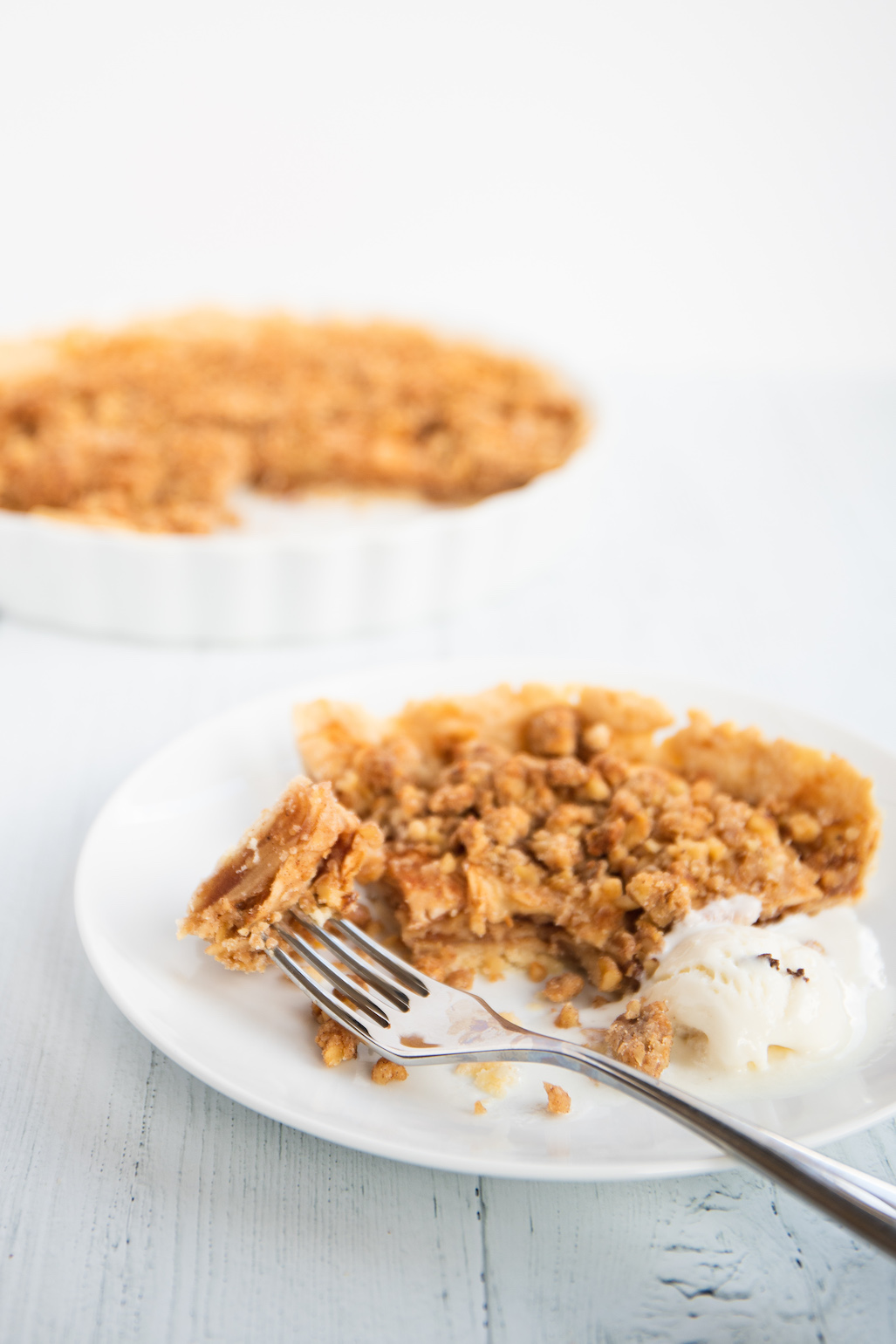
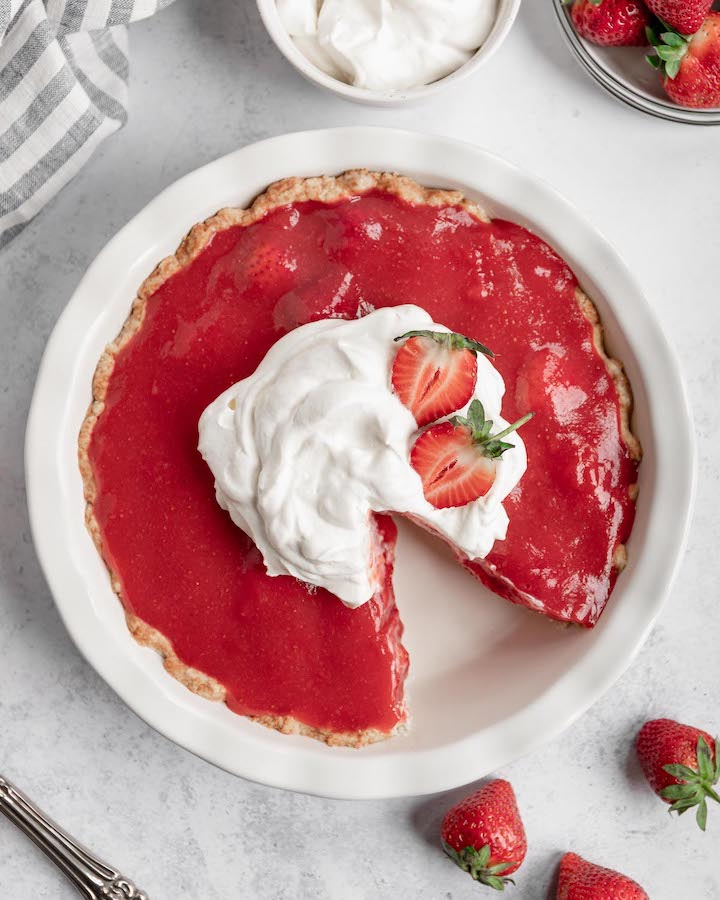

Leave a Reply